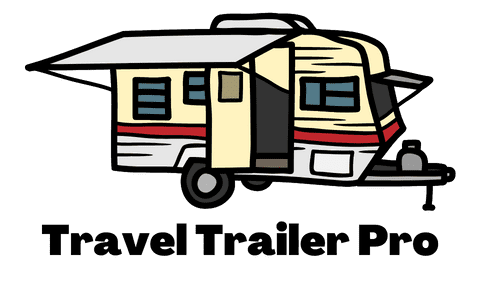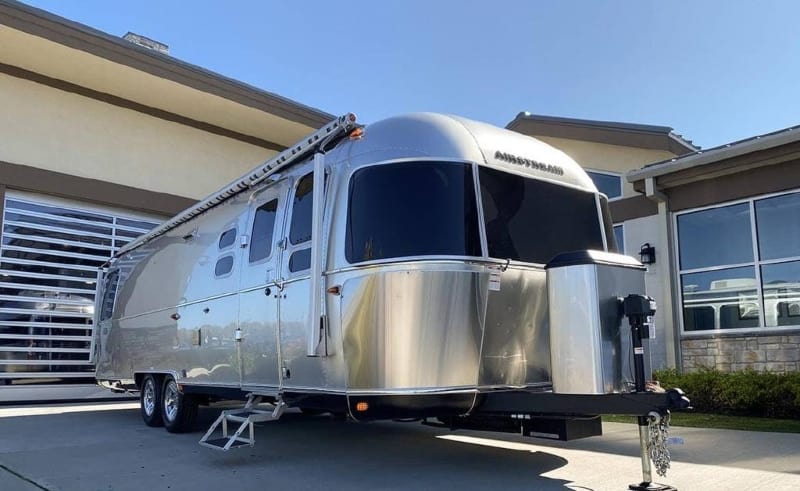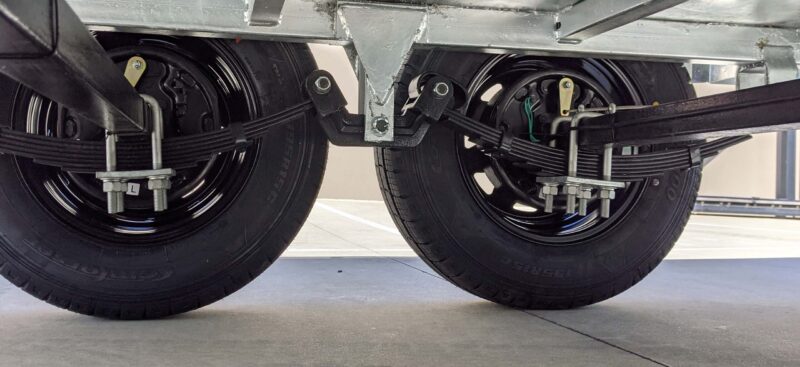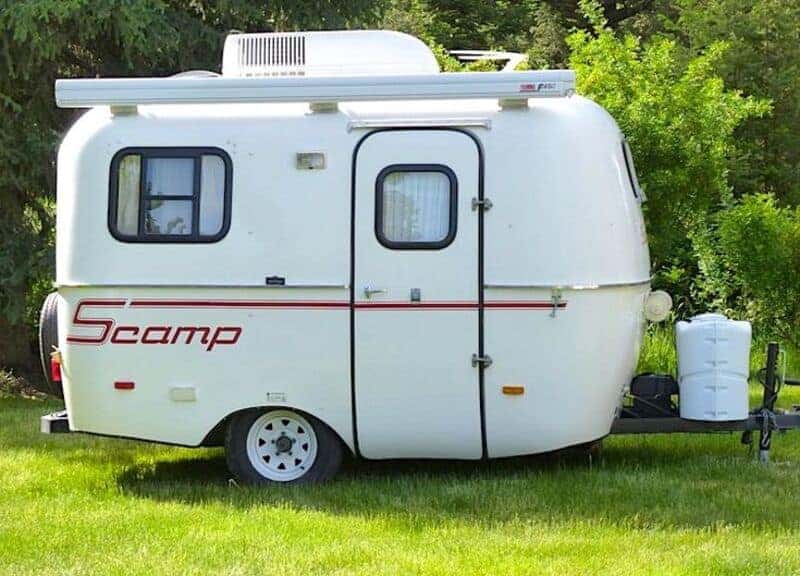Travel trailer repairs are part and parcel of the RV lifestyle. You can’t have one without the other. Maintenance and preventative maintenance are just a part of life on the road. In this article, I will share some of what I’ve learned about how to avoid some of the most common travel trailer repairs.
Some things stand out more than others, and RVers are understandably agitated with manufacturers in recent years, thanks to the expanding number of repairs. Hopefully, what’s become common in the last few years, is not a reflection of the long-term.
In the meantime, it’s a good idea to compile a preventative maintenance list, which accomplishes two things. First, it helps to tackle issues before they become serious problems. Second, it trains your eye to see potential issues before they arise.
Why Do Travel Trailers Have So Many Issues?
While there’s always a degree of quality control issues (RVs are moving homes, complicated in many ways), COVID put the situation front and center, arguably making it worse. It’s a matter of quantity over quality. Anyone working in the manufacturing industry will tell you that an emphasis on quantity only makes things worse.
While we were touring and creating RV reviews over the past five years, we certainly noticed a huge decline in the quality of travel trailers during the pandemic. It was during this time that the phrase “Covid Coach” was born.
The demand for RVs throughout the pandemic drove production through the roof, with many hands and skill sets involved in the assembly line. There’s also the lack of universal components, with many parts coming from different brands, with different quality control standards and protocols.
Combine all of that with a travel trailer that faces a future of getting beat to death over potholes, side roads, curbs, etc., and you have a recipe for repair issues. In most cases, extensive use is as bad as no use. A travel trailer that sits for a long time is susceptible to problems as well.
Last but not least, new RVers have absolutely no clue what they’re looking at. We’ve all been there. Owning a new travel trailer does not automatically convey travel trailer expertise. We learn as we go, and it’s hard to know every little thing to look for with no experience at all.
As time goes on, that preventative maintenance list grows and things fall into a sort of rhythm, especially if you’re proactive about staying on top of things. In the meantime, here is a list of the most common travel trailer repairs. If you’re a first-time travel trailer owner, make good use of it.
What Are The Most Common Travel Trailer Repairs?
Keep in mind that the most common travel trailer repairs are not necessarily the same as the things we encounter during the shake-down stage. The following list is an overall picture of the regular, ins-and-outs of repairs that all RV owners deal with at some point or another.
1. Tire Blowouts
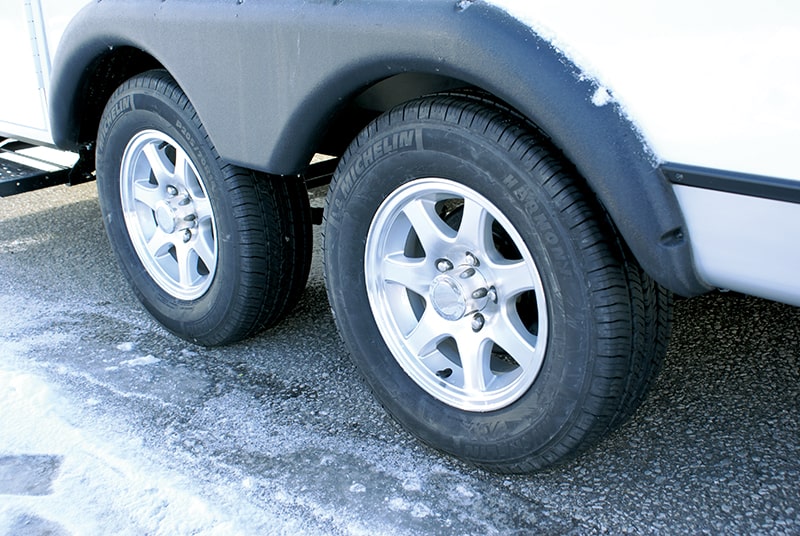
No travel trailer repairs list is complete without listing tire blowouts, something that’s common on anything that sits on the ground with wheels. While travel trailer tire blowouts are common, they are definitely scarier than a blowout on your car, especially if it’s a sizable, heavy travel trailer, and you’re traveling at a high rate of speed.
A big part of preventative maintenance is knowing what to expect and understanding causation. As it happens, there are several things that can potentially cause a tire blowout.
- Tires become too hot
- The travel trailer is overloaded
- Axle alignment issues
- Low or high tire pressure
- Sidewall cracking goes unaddressed
- Wrong tire size
- Low tread on an old tire
- Punctures in the tread or sidewall
Of course, knowing what causes blowouts is all the information you need to practice some good old-fashioned, preventative maintenance. The kind of preventative maintenance necessary for avoiding blowouts is fairly straightforward and simple. It’s just a matter of routine observation.
- Check and maintain your tire pressure routinely
- Add an air compressor to your repair toolkit
- Keep your tires covered when the travel trailer sits for a while
- Install a tire pressure monitoring system
- Routinely check the sidewalls
- Replace your tires every 5 to 7 years
2. A/C Not Cold
Travel trailer repairs aren’t all that different from your average home and auto repairs. Everything is a little smaller and a little closer at hand, however, which makes maintenance and repairs a little easier in some cases. The A/C not blowing cold is a common, if extremely frustrating, repair in travel trailers and RVs in general.
Newbie RVers are probably just discovering the dynamics of parking on asphalt, directly in the sun, and something actually being wrong with the A/C. Much of the time, it’s less about the A/C and more about the outside heat and how you’re handling it.
- Check your windows and roof vents to see if you feel a lot of outside heat coming through
- Make sure your RV is parked in a shady spot and not directly in the sun
- Check your A/C filter and clean it if necessary
- Check the A/C coils and fins and clean them if necessary
The A/C unit is one of the most important appliances on your RV but, for some reason, RVers seem to neglect it more than anything else. It’s a pain in the neck to service one, but it’s more than worth the effort.
3. Roof Leaks
Inclement weather, heat, cold, and the strains of the road create very common issues with the roof. You have a variety of things mounted to the roof and, wherever something is mounted, or a vent fan sits, is also a weak spot.
One of the worst things about a roof leak is the residual damage that comes after, especially if it rains. Roof leaks can also develop into one of the most damaging travel trailer repairs on the list.
- The roof is not sealed properly
- Delamination in the sidewall
- Faulty sealant around roof structures
- Damage from accidents (on the road or caught in extreme storms)
There are vent fans, skylights, solar panels, A/C units, antennas, cables passing through the roof, fans, and basically, an entirely distinct, topographic network of stuff, all of which need a reason to penetrate your travel trailer roof.
If they could come up with a vibrating massage chair that can be mounted to an RV roof, they would probably do it.
All of these ingress and egress points weaken the structure and all of them, individually, are a weak point in the rooftop. This is a formula for one of the more insidious roof issues—the slow leak.
It’s the one you don’t see. Meanwhile, it’s creating mold and mildew. Staying on top of your RV roof (not literally) is all about preventative maintenance, once again.
- Conduct routine inspections of your RV’s roof
- Look for cracked Dicor patching
- Keep an eye out for UV damage and physical damage along and around everything mounted on your travel trailer’s roof
- Bubbles, blisters, and cracking
- Check over all Dicor and other sealants twice per year (at the very minimum)
4. Furnace Problems
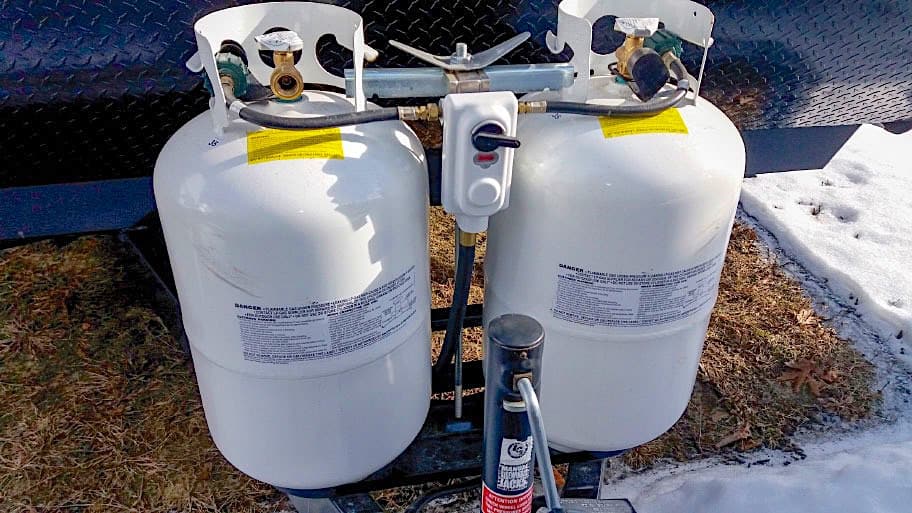
Furnace problems are right behind the A/C as one of the more irritating travel trailer repairs, especially if you’re in places like Alaska or northern Minnesota from January to February. The difficulty with furnaces is that the underlying issue is nebulous. However, there are key troubleshooting identifiers to help you lock it down.
| Identifier | Problem |
|---|---|
| No ignition | Propane tank valve, dirty connectors, poor airflow, ceramic housing damage, or low LP pressure |
| No spark | Blown fuse, tripped breaker, or faulty igniter |
| Continuously runs | Bad thermostat (Could also explain why it doesn’t kick on when it should) |
| Fan is blowing but little or no heat | Faulty internal sail switch |
| Furnace is sluggish | Damaged wiring, low power, dust and debris on the blower wheel, faulty gas valve |
| Irregular function | Poorly positioned or faulty thermocoupler |
Those are just some of the more common problems. There are more parts that a furnace relies on than meets the eye. One of the most helpful things you can do is look up your furnace and learn everything you can about its functionality. Though some of the jargon above sounds difficult, most of them are surprisingly simple fixes.
5. Wheel Bearing Replacement
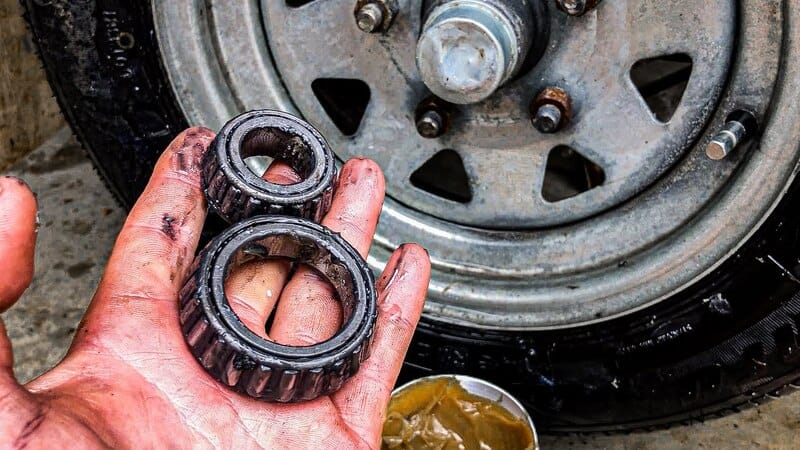
Of the travel trailer repairs on this list, failing wheel bearings are the loudest. Wheel bearings are greased and when the grease wears off, metal-on-metal friction takes its place. The general rule of thumb is to replace them every 12,000 miles.
Of course, almost no one does that. However, stick to 12,000 miles, and you won’t have to worry about that awful squealing sound and the eyes of the entire campground squarely on you as you back your travel trailer in. Now, you can clean and grease your wheel bearings, or you can replace them.
The former is the most labor-intensive, believe it or not. Knowing that the choice is entirely up to you.
6. No Battery Power
Unless your batteries are ancient and you’re just ignoring them, this is something that rarely has to do with the batteries. As travel trailer repairs go, this is often the simplest to fix, because it is most likely your circuit breakers.
All it takes is cranking up the microwave and inching over that 30-amp limit without realizing it. In the vast majority of battery issue cases, the rig’s breakers are tripped, and it’s the first thing you should check.
If the breakers look fine, check the battery disconnect switch. Make sure that you’re not over-addressing the problem as well. For instance, you might have a faulty GFCI outlet and are attributing it to the battery. Last but not least, check over all of the visible wiring, looking for corrosion or obvious damage.
7. Shower Not Draining
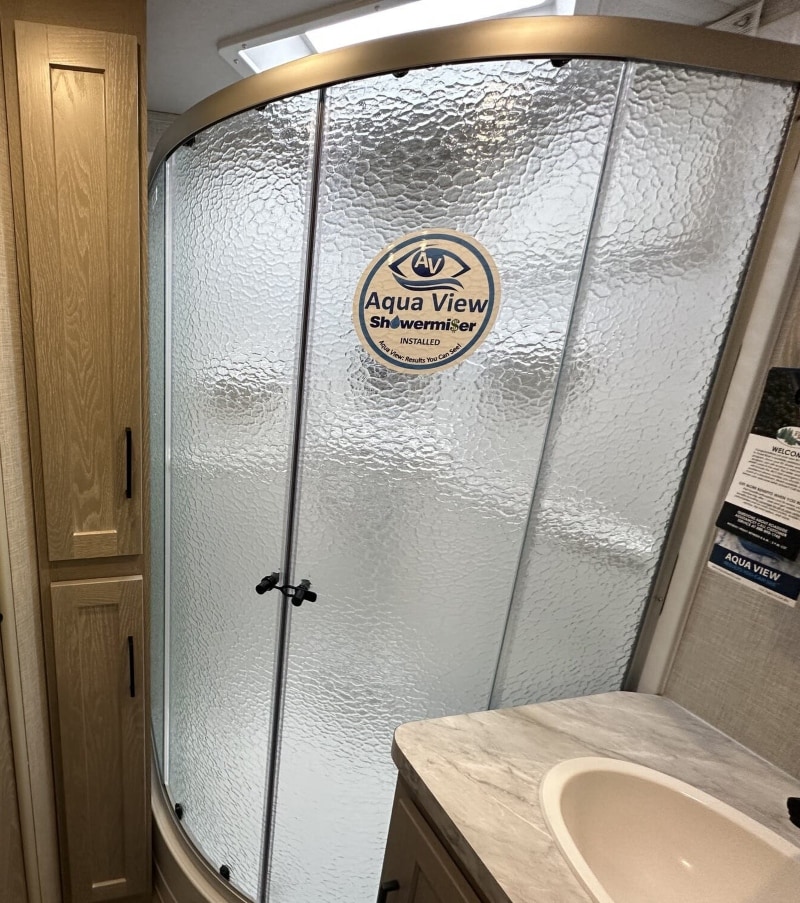
You’re as liable to run into this in your home as you are in an RV because it’s so common in both. This is either one of the cleanest or dirtiest of travel trailer repairs, depending on how far you have to go. If you have long hair, well, get the gloves ready.
Start troubleshooting at the drain and work your way to the gray water tank. That is, unless the gray water tank is full. In that case, you know what you have to do. Avoid using powerful chemical cleaners in your RV, as the pipes aren’t as resilient as their household counterparts.
Dump a box of baking soda in the drain and follow it up with vinegar. Don’t mix the two first, unless you want to throw a bubbling, hissing, mess of a party in your RV bathroom. If you have to pull hair out, there’s nothing for it but to get down there and start yanking.
I find that removing the drain cover helps before you start removing the hair clog. And sometimes I take a wire hangar and cut it. Then I bend the end to make a small hook which helps to grab any hair further down the drain. Once you’re done, a few hits with the plunger should finish it off.
8. Toilet Doesn’t Hold Water
Another of the dirty travel trailer repairs you’re likely to come across is a toilet that refuses to hold water. Not so bad when going number one. Number two is problematic at best. This type of RV toilet has to have running water and a stable water level to function properly. There are a few reasons a toilet won’t do its job and hold water.
- Water pressure is low
- The flange is damaged and needs replacing
- The gasket is worn out and needs replacing
- Busted valve
- Clogged drain line
- The fill tube is broken (in which case, your bathroom is now a water park)
- Built-up limescale compromises the seals
There are others on the above list that may turn your bathroom floor into a slip-n-slide, depending on where the water diverts. As long as your water is on, it has to go somewhere and gravity doesn’t always function at our convenience.
Fortunately, most of these are visible fixes, and, even if you have to remove the toilet, it’s not the most difficult job (if a bit unclean).
9. Awning Alignment
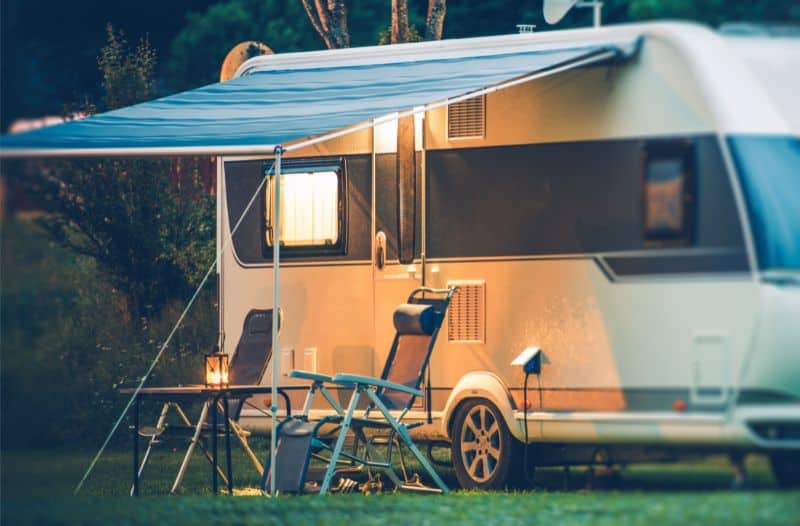
If you keep up with travel trailer repairs in the news, you probably know that awnings are the source of thousands upon thousands of recalls in recent years. Fortunately, awning alignment issues aren’t usually the core issue of these recalls. In fact, it’s something you can generally fix yourself with a ladder and a screwdriver.
What you want to do is locate the attachment points of the awning (Usually the drip rail or gutter), and loosen the screw enough to shift the fabric so it aligns when it rolls up and extends. You can sit there and open and shut the awning as much as you need to, making incremental adjustments until it feeds into the roll correctly.
10. Water Heater Issues
Like so many of the travel trailer repairs on this list, we can write entire articles on fixing some of these things. The water heater is one of them. Here are some common problems with RV water heaters and some troubleshooting tips.
- The water heater breaker is tripped
- The Campground breaker panel is off
- Faulty heating element
- Insufficient power or fuel
- Exhaust blockage
- The water supply is insufficient
The first two are pretty self-explanatory and easy to check. The faulty heating element is a simple one as well. All you need is a multimeter set to ohms (electric-only water heaters). Place your leads on the heating element and you should get a reading of 9.6 to 10 ohms.
For gas, always check your valves first and, of course, make sure your tanks are topped off. Exhaust blockage doesn’t even need anything solid to block it. All it takes is a strong wind and it can’t function properly. The only thing you can do in this scenario is shift the travel trailer to remove the exhaust from direct wind impact.
Routinely check and/or clean your filter screen and properly winterize your water heater every year. Make sure your water valves are all open and you’re not flushing the toilet too much while the tank is heating up for the first time.
What Travel Trailer Repairs Are Covered By Warranty?
First and foremost, if you break something or completely ignore an existing issue, taking advantage of the warranty just went out the window while traveling at high speed.
Besides that, warranties are tricky business and the small print really matters—a lot. Most of your common travel trailer repairs are covered, but there are always exceptions to keep an eye out for.
Also, if you think you can neglect insurance while warranty coverage is still average, that would be a resounding no. You still need to do your due diligence and cover the value of your asset with insurance.
You’ll get the most out of your warranty if you practice proper, routine preventative maintenance and insurance will take care of the things you can’t control.
Warranties cover most RV components in terms of workmanship and faults. In general, these include the aforementioned awnings, leveling jacks, engine and transmission (powertrain), steps, generators, water heaters, and water pumps.
It’s hard to get more specific than that, as subtle differences are common across a variety of brands.
The most important thing you need to know is—to go over that warranty thoroughly before you ever part with your hard-earned cash.
Mike and Susan, the owners of TravelTrailerPro.com and RVBlogger.com bought their warranty through Wholesale Warranties and highly recommend their coverage for a few reasons.
First of all, there is no mileage cap so if you are a full time or most time RVer, this is a huge advantage.
Second, Wholesale Warranties allow repairs from mobile RV techs. Mike and Susan have had their slide stuck in the out position twice, which prevented them from being able to drive to a repair facility.
And finally, they have saved thousands of dollars in repair costs in the first two years they owned their rig.
Is It Worth Doing Your Own RV Repairs?
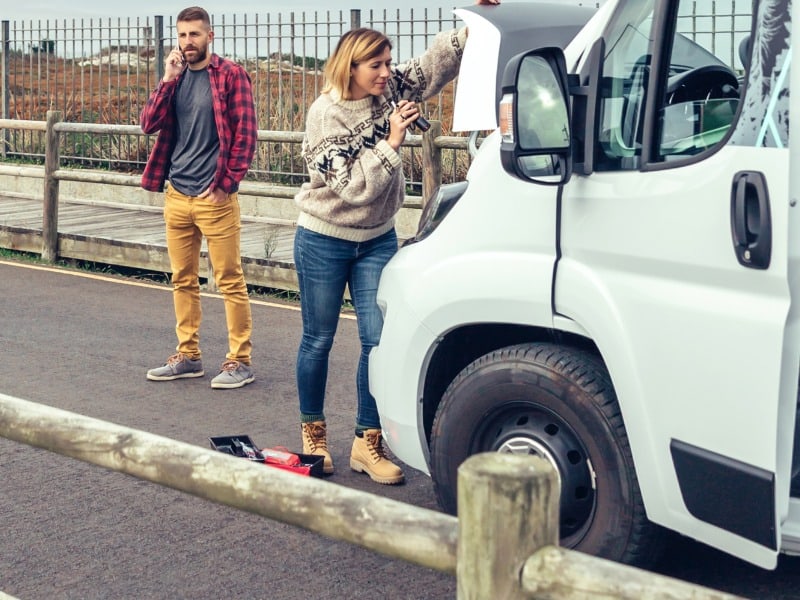
It’s more than worth doing your own travel trailer repairs, especially if you start going through the math in your head. The average car mechanic takes $72 an hour to fix your car. That figure increases to $100 an hour for RVs and $150 an hour for mobile RV techs.
You pay a lot more for the labor than you will for the part. Here’s a good idea of the cost for various RV fixes:
| Repair | Average Cost |
|---|---|
| Fuel System | $600 to $3,500 |
| Waste System | $200 to $3,500 |
| Slides | $500 to $2000 each |
| Brakes | $500 to $2,500 |
| Roof A/C | $500 to $3,500 |
| Leveling Jacks (Auto or Manual) | $500 to $2,500 |
| Fridge | $500 to $3,000 |
| Generator (if applicable) | $400 to $3,000 |
| Furnace | $300 to $1,500 |
| Suspension System | $250 to $1,500 |
| Fresh Water System | $200 to $1,000 |
| Water Heaters | $400 to $5,000 (additional install expense) |
As you can see, the expenses are wide-ranging, with a large disparity in most of the numbers, depending on the extent of the repair. If you do your own preventative maintenance, you’ll never know how much you’re saving, but it’s a lot.
If DIY travel trailer repairs are your thing, you effectively cut out the labor cost, while retaining the costs of the tools and components. At $100/hour, that’s a lot of savings.
Investing in training such as the NRVTA course will not only make you a more confident RVer but it can also save you time and money on RV repairs and maintenance.
Final Thoughts On Travel Trailer Repairs
Travel trailer repairs include a lot of information that we’ve crammed into small sub-sections. These are mostly troubleshooting tips and not replacements for full, informative breakdowns.
Fortunately, we have articles that are more specific on many of the common issues you may encounter throughout your time on the road.
This article is meant to hammer home the advantages of preventative maintenance and point you in the right direction with the most common travel trailer repairs. It’s honestly just a matter of time before you’re dealing with your own. It pays to be prepared!
Related Reading:
– How Often Should Travel Trailer Tires Be Replaced?
– What Does An RV Water Heater Bypass Valve Do?
–11 Proven Ways to Eliminate RV Toilet Smells
–How Often Should You Grease Travel Trailer Wheel Bearings
About the Author:
Thomas Godwin is a full-time freelance writer with a BFA in Creative Writing, a U.S. Marine, and an avid outdoorsman.
When he’s not writing, he’s raising chickens and Appleyard ducks. Thomas also constructs teardrop campers (attempting to anyway) and kayaks the Blackwater River with his wife, two daughters, and his Dobermans.

